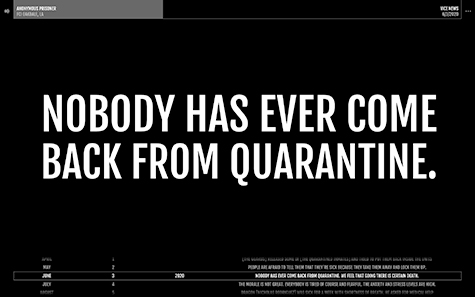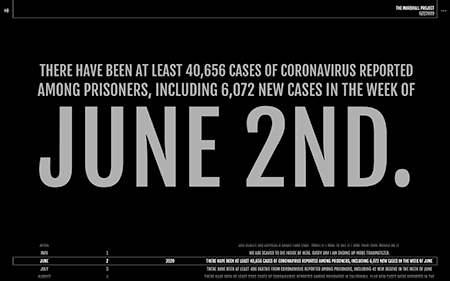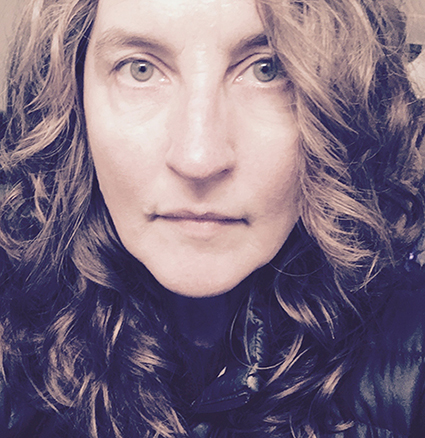Campus News
UCSC arts professor documents spread of COVID-19 inside prisons, jails, and detention centers
A new Interactive web project by film and digital media professor Sharon Daniel creates a cumulative public record and evolving history of the pandemic’s impact on those incarcerated



“In American jails and prisons, more than 252,000 people have been infected and at least 1,450 inmates and correctional officers have died.”
—New York Times, December 7, 2020
“EXPOSED” is a new web project that documents the spread of COVID-19 over time—inside prisons, jails, and detention centers—from the perspective of prisoners and their families.
UCSC film and digital media professor Sharon Daniel has taken quotes, audio clips, and statistics, collected from a comprehensive array of publications and broadcasts, and assembled them into an interactive timeline that offers endless testimony to the risk and trauma that prisoners are experiencing under coronavirus quarantine.
The design of the interface allows viewers to step through thousands of ‘headline-style’ quote sequences and audio clips, each linking to its original source.The project also includes an autoplay feature that cycles through the statements with no interaction needed—designed for exhibitions and screenings in museums and galleries during the pandemic period when gallery visitors cannot be asked to touch surfaces in public spaces.
“The scale of the project is intended to reflect the scale of the crisis,” said Daniel. “At this moment the autoplay version takes well over 24 hours to run from beginning to end.”
“Since the first reported coronavirus infection in the U.S., incarcerated people have been subjected to extreme forms of isolation—visits have been suspended, phone privileges restricted, and the use of solitary confinement expanded exponentially,” Daniel added.
“Prisoners are stranded in quarantine without adequate food or medication—abandoned and unseen. Unfortunately, given this isolation, their words are all we have. The monochrome, image-less, headline-styled interface, which allows viewers to step through thousands of prisoners’ statements, is designed to visualize the collective nature of their suffering and signal that the injustices they endure are structural.”
Daniel’s research has focused on injustice in the criminal punishment system for a number of years, so she was well aware that prisons and jails are incubators and amplifiers of infectious diseases where social distancing and basic sanitation are impossible. She noted that when the first coronavirus infections in the U.S. were reported, she was reasonably certain that corrections officers would ultimately walk the virus into prisons, and it would then spread like wildfire.
“The first positive case among prisoners in California was reported on March 22,” said Daniel. “By late March/early April, I was spending hours scouring the news for information about the impact of the virus on incarcerated people. And while mainstream media and local news stations were reporting on the issue, only niche/specialist publications focused on criminal justice reform were providing consistent coverage and collecting data. So I decided that it was important, to me at least, to find a way to start documenting the spread of the virus in prisons, and jails and detention centers, from the perspective of prisoners and their families.”
Daniel launched the project on October 30, in conjunction with the Barring Freedoms exhibition opening at the San Jose Museum of Art.
“I wanted to create a cumulative public record and evolving history of the pandemic’s impact on incarcerated people,” said Daniel. “My hope is to increase awareness of the critical danger that COVID-19 presents in prisons and jails, and demonstrate that the criminal punishment system itself constitutes a public health crisis.“
Exposed is the latest in a series of new media documentary projects created by Daniel that reveal social and economic injustice across public institutions, including the criminal justice system, the prison industrial complex, the public health system, and the public education system.
Through interactive web documentaries and installations, her projects document and analyze testimony and evidence to illustrate how state institutions, social structures, and economic conditions connect in a causal chain that fosters and perpetuates social injustice.